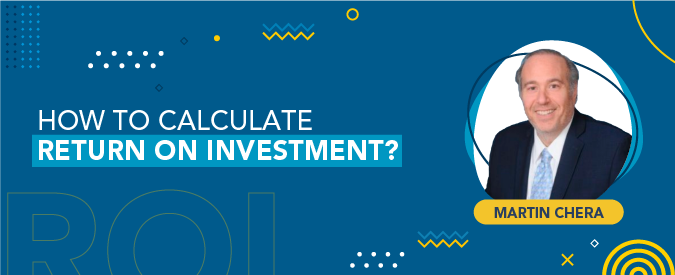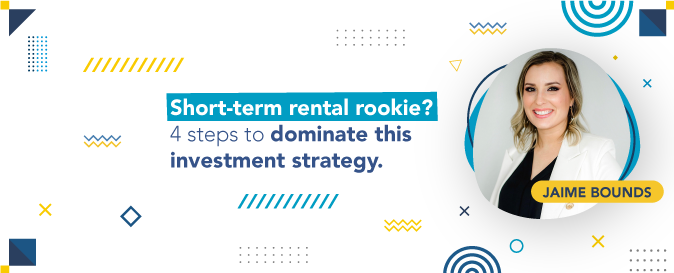If you’re learning how to flip a house or considering getting into the fix and flip strategy, you might have done a bit of research. However, if TV shows somewhat inspired you, beware! They’re not entirely transparent about the process. For that reason, we invited the experienced lender and real estate investor Martin Chera to give you honest advice on doing it correctly.
“At the beginning, it’s easy to have pie-in-the-sky, TV-induced delusions about how to make money flipping houses. House flipper TV shows make it look so simple,” the expert warned at his last webinar at Real Estate IQ. The thing is that, like any business, the fix and flip strategy comes with its ups and downs. So, it requires some ramp-up time, good resources, and great relationships.
To help you thrive and scale your business, the lender divided the process into five different steps or phases. And he shared some insights for each one of them! Here, you’ll find the first part of a summary of his latest webinar. And here are the 16 first-time flipper mistakes to avoid!
Step 1: Finding houses to fix and flip
The first thing you need is a source of properties. And they have to come to you periodically because, as Chera put it, they won’t knock on your door saying, “Hey, buy me, you’re going to make a huge profit.” So, the best alternative is to subscribe to a listing, like Real Estate IQ’s Off Market Leads.
In essence, you need a reliable system or source that brings good properties to the table. And our listings are precisely that: daily emails with the best off market properties in the area, organized in up to 10 different leads! Plus, skip tracing is built-in if you choose the premium version!
You can also find good potential flip properties by direct mail, bandit signs, driving for dollars, door-knocking for profits, property scouts, networking, and so on.
Step 2: Figuring out if an investment property is a good one
To decide whether a deal is profitable or not, you need information. However, Chera encouraged attendees not to get stuck in the analysis. “Eventually, you will have to get into it, and you will make mistakes. They’re part of the success. You learn from them and do things differently next time,” he reflected. But, where can you get the data you need? By turning to your network! The lender recommended not only talking to them but also taking care of them.
As of the deciding part, to figure out if a deal is an opportunity, you’ll have to answer the following questions – which apply not only to fix and flip but also to wholesaling:
- What is the value of the property (both as-is and the ARV)?
- What are the repair costs?
- What are the other costs associated with the flip?
- What are the critical areas of due diligence you need to focus on?
Lastly, keep in mind that you may lose money, time, and energy if you don’t know the answers. Nonetheless, this is OK, especially at the beginning, because you need to fail to thrive. Just don’t forget to use a proven fix and flip formula and effective due diligence.
Step 3: Funding deals
To develop a fix and flip strategy, you need access to funds to acquire and renovate the property. The best way to tackle this is to work on it before finding a deal, so you don’t waste time once you do.
“You need to know what you’re approved for and how much cash you’ll have to put down. Typically, hard money lenders ask for a 10 to 20% down, depending on whether you’re a newbie or an experienced investor. In this case, the experience gets you leverage, or in other words, less money from your pocket,” the lender revealed.
Step 4: Fixing a house to flip
You got the house; you got the funding, so now it’s time to do the hard work! Chera suggested always having some level of oversight with every project, even if you’re more of a hands-off flipper.
With every fix and flip property, you have to ask yourself:
- Do you know what has to be fixed and why? – Identifying priorities is critical for both the planning and your budget. And don’t forget that the most important rooms in the house are the kitchen and bathrooms!
- Do you know when is best to fix it? – Timing matters! Seasons affect the length of the flip, determine specific characteristics of the place, and even condition the work. Thus, thinking about this beforehand can help you invest more wisely.
- Do you know what to look for in a good contractor? – Last but not least, your crew. Chera said it’d be best to have a few bids before deciding. Get rid of the cheapest one if it’s too cheap because it might not use the best materials. And then, analyze the others to spot their differences. Another clever idea would be to check their referrals and visit other houses where they worked before. It may take you some time, but Chera assured that when you find a decent contractor, that’s how you scale your business.
Before moving to the last item on the list, the investor advised not to be absent from the fix and flip process. “You want to be there almost every day because you’ll learn just by visiting the place and talking to contractors, and because when you’re spot-checking them, they see you’re a serious investor,” he explained. After all, this is your business, so the more involved you are, the more successful you’ll be.
Step 5: Flip that house!
The last stop on the road is to find an end buyer. And to do that, you must know them and your market. Executing a profitable sale is no accident: it involves a strategy that starts long before you put the for sale sign in the yard. You bought it for the right price, fixed it according to the neighborhood, and now it’s time to let it go.
But what if you can’t? According to Chera, you must always map out a doable marketing plan: have a clear exit strategy, but know the downsides if you can’t sell it. And that includes a backup plan for the property, as well as some financial support (a.k.a. savings) in case you need to pay for the mortgage until you find tenants, for instance.
And that’s it! These five easy steps separate you from a successful flip. Now, it’s time to avoid the 16 first-time flipper mistakes!
Disclaimer: The blog articles are intended for educational and informational purposes only. Nothing in the content is designed to be legal or financial advice.






